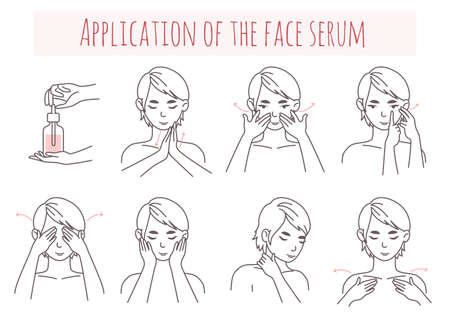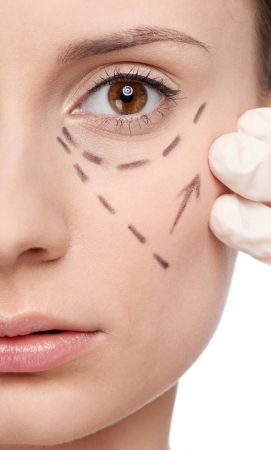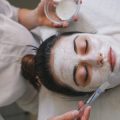Understanding Skin Boosters: What Are They?
In the quest for radiant and youthful skin, British skincare enthusiasts are increasingly turning towards advanced treatments that go beyond traditional creams and serums. Among these innovations, skin boosters have garnered notable attention in the UK. But what exactly are skin boosters, and how do they stand apart from conventional skincare methods? At their core, skin boosters are injectable treatments designed to hydrate, revitalise, and improve the overall quality of the skin from within. Unlike topical products that work on the surface, skin boosters utilise cutting-edge technology to deliver hyaluronic acid or other active ingredients directly into the deeper layers of the dermis. This approach provides long-lasting hydration and stimulates natural collagen production, leading to smoother texture and a more luminous complexion.
2. The Non-Surgical Appeal: Why Skin Boosters Are Trending in Britain
In recent years, the UK has witnessed a marked shift towards non-surgical cosmetic treatments, with skin boosters emerging as a standout trend among those seeking to achieve radiant and youthful skin. Several key factors are fuelling this rise in popularity, reflecting distinct British attitudes towards beauty and cosmetic enhancements. Unlike more invasive procedures, skin boosters offer a subtle, natural-looking improvement—aligning perfectly with the classic British preference for understated elegance and authenticity.
The Influence of British Beauty Standards
British beauty ideals have long emphasised a healthy, glowing complexion over dramatic transformations. There is a cultural tendency to value ‘effortless’ beauty, where any enhancement should remain undetectable to the untrained eye. Skin boosters fit neatly into this narrative by providing hydration and luminosity without altering facial structure or expression. This aligns well with the desire for rejuvenation that enhances one’s natural features rather than masks them.
Preferences Shaping Treatment Choices
Convenience and minimal downtime are significant considerations in the UK market. Busy urban lifestyles, coupled with a growing awareness of self-care, mean that many Britons are seeking solutions that deliver visible results without disrupting their routines. Non-invasive treatments like skin boosters typically involve short appointments and little to no recovery time—a major advantage for professionals and parents alike.
Comparative Overview: Non-Surgical vs Surgical Solutions in Britain
| Treatment Type | Downtime | Perceived Risk | Cultural Acceptance | Result Style |
|---|---|---|---|---|
| Skin Boosters (Non-Surgical) | Minimal to None | Low | High | Subtle, Natural Glow |
| Surgical Procedures (e.g., Facelift) | Weeks | High | Lower (increasingly stigmatised) | Dramatic Change |
The Aversion to Surgery: A Distinctly British Perspective
A notable driver behind the surge in demand for skin boosters is a widespread aversion to surgical interventions. Concerns about risks, extended downtime, and unnatural outcomes have made many Britons wary of going under the knife for aesthetic reasons. This hesitance is further reinforced by public discourse around body positivity and transparency within the beauty industry—factors that champion less invasive options as both safer and more socially acceptable.
Ultimately, the appeal of skin boosters in Britain lies at the intersection of cultural values, practical lifestyle needs, and evolving expectations around beauty enhancement. By offering a non-surgical path to healthier-looking skin, these innovative treatments meet contemporary demands without compromising on safety or authenticity.

3. Key Ingredients and Innovations: What Makes British Skin Glow
When it comes to achieving radiant and youthful skin without surgery, British clinics and skincare specialists are highly selective about the ingredients and technologies they employ in skin boosters. At the heart of most protocols is hyaluronic acid, a naturally occurring molecule celebrated for its ability to attract and retain moisture. This ingredient is particularly favoured in the UK, where environmental factors like central heating and variable weather can leave skin parched and dull. Advanced formulations often use cross-linked hyaluronic acid, which delivers longer-lasting hydration and a subtle plumping effect that aligns perfectly with the British preference for understated enhancement.
Innovative Technologies in Skin Boosters
The UK market has seen a surge in sophisticated delivery systems such as microinjections and microneedling. These minimally invasive techniques allow for precise placement of active ingredients within the dermal layers, maximising efficacy while minimising downtime—a crucial consideration for busy British professionals. Many London-based aesthetic clinics utilise cutting-edge devices that ensure even distribution, leading to a natural-looking luminosity rather than an overtly “done” appearance.
Signature British Protocols and Products
British practitioners often tailor skin booster treatments to individual needs, integrating peptides, antioxidants, and sometimes vitamins (notably vitamin C and B5) into their bespoke protocols. Brands such as Profhilo, Teosyal Redensity 1, and Jalupro have gained significant traction among UK dermatologists due to their proven results in improving skin texture, elasticity, and brightness. These products reflect a broader trend in the UK towards evidence-backed solutions that promote gradual, cumulative improvements over time.
The Role of Sustainability and Ethics
A uniquely British concern is the emphasis on sustainability and ethical sourcing within skincare innovations. Clinics across the country are increasingly opting for products with minimal additives, cruelty-free credentials, and traceable ingredients—responding to consumer demand for both efficacy and conscience. This focus ensures that British skin booster treatments not only deliver visible benefits but also align with contemporary values around wellness and responsibility.
In summary, the combination of advanced hyaluronic acid formulations, innovative delivery methods, customisable treatment protocols, and an ethical approach underpins why British skin booster practices are at the forefront of non-surgical facial rejuvenation. These factors collectively contribute to the fresh-faced glow so often associated with modern British beauty ideals.
4. Aesthetic Expectations in the UK: Natural Results and Subtlety
The British approach to aesthetic enhancements is notably distinct, prioritising subtlety and authenticity over dramatic transformations. This cultural preference has a direct impact on how skin boosters are perceived, chosen, and marketed across the UK. Rather than seeking overt changes or an artificial appearance, individuals in Britain typically desire improvements that enhance their natural features and promote a healthy, radiant complexion—without drawing attention to the fact that a treatment has taken place.
Embracing Subtle Enhancement
In the UK, there is a strong appreciation for treatments that deliver gradual, understated results. The prevailing sentiment is that beauty interventions should be virtually undetectable to others; friends and colleagues might notice a fresher look, but rarely will they identify the specific reason behind it. Skin boosters align perfectly with this ethos by providing hydration and luminosity from within, resulting in skin that looks revitalised rather than “done.”
How British Preferences Shape Skin Booster Use
The table below highlights key aspects of the British aesthetic compared to more globally prevalent trends:
| British Approach | Global Trends | |
|---|---|---|
| Main Goal | Natural radiance and subtle enhancement | Visible transformation and contouring |
| Preferred Outcome | Healthy glow, refreshed skin, no obvious signs of intervention | Youthful volume, sharper features, sometimes more noticeable change |
| Communication Style | Discreet, understated marketing; focus on self-care and confidence | Bolder claims and before/after imagery; emphasis on instant results |
| Treatment Frequency | Gradual improvements with maintenance sessions every few months | Occasional dramatic procedures with longer intervals between treatments |
The Impact on Marketing Strategies
This demand for authenticity drives clinics and practitioners to tailor their messaging around real-life benefits such as improved skin texture and hydration rather than exaggerated promises. Marketing materials often emphasise clinical efficacy, safety profiles, and patient testimonials that reflect authentic experiences. By aligning with these values, skin booster brands can better connect with British consumers who are discerning about both results and reputation.
5. Safety, Regulation, and Practitioner Standards in the UK
When it comes to skin booster treatments, safety is paramount—especially within the UK’s highly regulated aesthetics sector. British consumers are increasingly discerning, demanding assurance that any procedure is both safe and effective. Fortunately, the UK has implemented rigorous protocols and professional standards to ensure that skin booster treatments are administered with the utmost care and responsibility.
Regulatory Oversight of Skin Boosters
In the United Kingdom, skin boosters are classified as medical devices or prescription-only medicines depending on their composition and intended use. This means they fall under the regulation of authorities such as the Medicines and Healthcare products Regulatory Agency (MHRA) and, for practitioners, the Care Quality Commission (CQC) where applicable. These organisations establish comprehensive guidelines regarding product safety, sterile manufacturing processes, and post-market surveillance.
Practitioner Qualifications and Training
Only qualified medical professionals—such as doctors, dentists, or nurses registered with their respective regulatory bodies—should administer injectable skin boosters in the UK. Practitioners are expected to maintain up-to-date training in aesthetic procedures, emergency response (including management of adverse reactions), and infection control. Reputable clinics will display practitioner credentials openly and encourage prospective clients to verify qualifications via the General Medical Council (GMC), Nursing and Midwifery Council (NMC), or General Dental Council (GDC).
Clinic Standards and Patient Protection
Clinics offering skin booster treatments must adhere to strict hygiene protocols, from single-use needles to properly sanitised treatment environments. In addition, robust consent processes ensure patients fully understand potential risks, outcomes, and aftercare requirements prior to proceeding. The CQC inspects registered clinics for compliance with these standards, providing an additional layer of reassurance for clients seeking non-surgical rejuvenation.
The Role of Voluntary Registers
Beyond statutory regulation, several voluntary registers such as Save Face and the Joint Council for Cosmetic Practitioners (JCCP) offer further transparency by accrediting practitioners who meet high standards in ethics, training, insurance, and client safety. Choosing a practitioner listed on these registers gives British consumers confidence that they are receiving care from trusted professionals dedicated to safe practice.
Conclusion: Prioritising Safety in Pursuit of Radiance
The UK’s robust system of regulation, professional qualification requirements, and independent oversight ensures that skin booster treatments remain a safe option for those seeking radiant and youthful skin without surgery. For individuals considering this trend-driven approach to skincare, choosing a qualified practitioner working within the UK’s established framework is essential for optimal results and peace of mind.
6. Comparing Options: Skin Boosters Versus Other Treatments
When considering non-surgical solutions for achieving radiant, youthful skin in the UK, it’s essential to understand how skin boosters stack up against alternative treatments. The British aesthetics market offers a variety of options, each with unique benefits and considerations. Below, we break down the key distinctions to help you make an educated choice.
Skin Boosters: Subtle Hydration and Glow
Skin boosters—such as injectable hyaluronic acid microdroplets—are designed to improve overall skin quality by enhancing hydration, elasticity, and luminosity without altering facial structure. Favoured for their subtlety, they are ideal for individuals seeking a naturally refreshed appearance with minimal downtime. Results typically appear gradually and can last up to six months, making them well-suited for those who prefer low-maintenance yet effective solutions.
Dermal Fillers: Targeted Volume Restoration
Unlike skin boosters, dermal fillers focus on restoring lost volume or enhancing specific features such as lips or cheeks. While both use hyaluronic acid, fillers are more structural and transformative, often providing immediate results. However, overuse or incorrect placement can lead to an unnatural look—a concern echoed in British beauty circles where subtlety is prized.
Chemical Peels and Microneedling: Texture Refinement
Chemical peels and microneedling are other popular non-surgical treatments available across UK clinics. Peels exfoliate the skin surface to address pigmentation and fine lines, while microneedling stimulates collagen production for improved texture. Although effective for certain concerns, these methods may involve more downtime or risk of irritation compared to skin boosters, particularly for sensitive British complexions.
Laser Treatments: Advanced Rejuvenation
Laser therapies offer targeted correction for issues like sun damage, redness, and fine lines. These technologies can be highly effective but often require multiple sessions and come at a higher price point. Moreover, post-treatment care is crucial to avoid adverse effects—especially important given the unpredictable British weather that can complicate recovery from light-based treatments.
Making the Right Choice for Your Skin
Your decision should factor in your individual needs, lifestyle preferences, budget, and desired outcomes. Skin boosters remain a favourite among those seeking a gentle enhancement with a natural finish—reflecting the understated aesthetic often preferred in the UK. Consulting with a qualified practitioner ensures you choose the most suitable option tailored to your unique complexion and goals.
7. Future Trends: The Evolving Role of Skin Boosters in British Skincare
As the world of aesthetics continues to advance, skin boosters are poised to play an even more influential role within British skincare routines. Looking ahead, several trends and technological innovations are expected to shape how these treatments evolve and how they are perceived by both practitioners and consumers.
Anticipated Advancements in Skin Booster Technology
The next generation of skin boosters is likely to feature enhanced formulations that target specific concerns, such as pigmentation, environmental damage, or even genetic predispositions towards premature ageing. British clinics are already at the forefront of adopting products with improved hyaluronic acid cross-linking, bio-stimulatory ingredients, and tailored delivery systems designed to maximise efficacy and safety. Furthermore, integration with digital skin analysis tools may allow practitioners to personalise treatment plans with unprecedented precision.
Changing Public Attitudes: From Taboo to Mainstream
Historically, the British public has maintained a reserved attitude towards cosmetic enhancements. However, this is shifting rapidly as skin boosters gain recognition for their subtle, natural-looking results. Increasing awareness around non-surgical options is fostering a cultural shift where seeking professional help for skincare is seen as self-care rather than vanity. The rise of social media influencers and transparent discussions about aesthetic treatments are further normalising skin boosters among all age groups in the UK.
British Influence on Global Skincare Trends
The UKs unique blend of scientific rigour and emphasis on understated elegance means that British consumers often prioritise clinically-proven results over fleeting beauty fads. This pragmatic approach is resonating worldwide—international brands are adapting their offerings to meet British standards for safety and efficacy. Moreover, as sustainability becomes a central concern, there is growing demand for eco-friendly packaging and ethically sourced ingredients in skin booster products, setting a new benchmark globally.
What Lies Ahead?
As innovation accelerates and attitudes evolve, skin boosters will undoubtedly become more integrated into the fabric of British beauty culture. The focus will remain on achieving radiant, healthy-looking skin without resorting to invasive procedures. By continuing to champion transparency, science-driven solutions, and responsible consumption, British consumers are well-positioned to shape the future direction of skincare trends both at home and across the globe.


